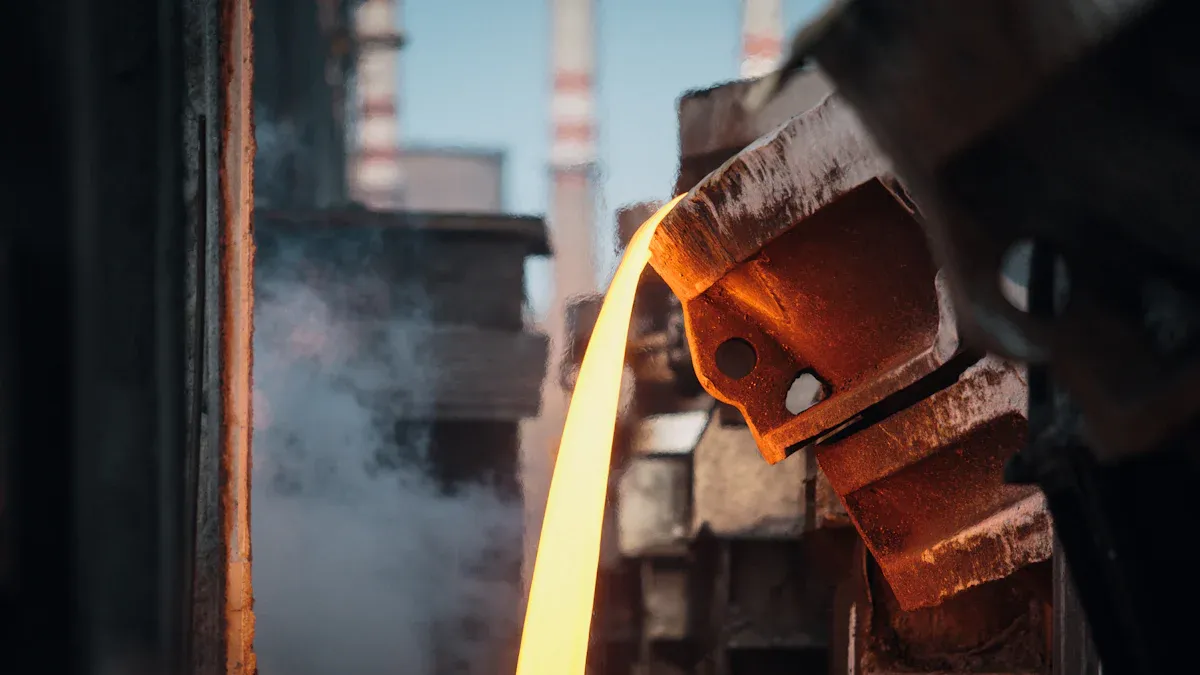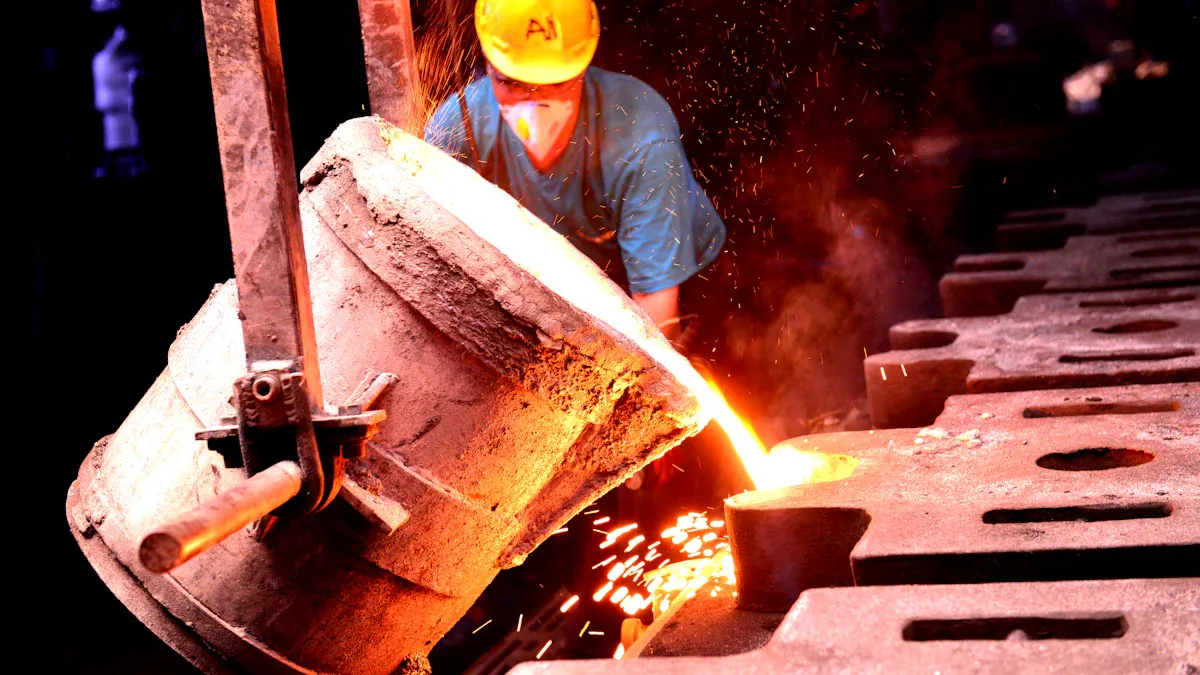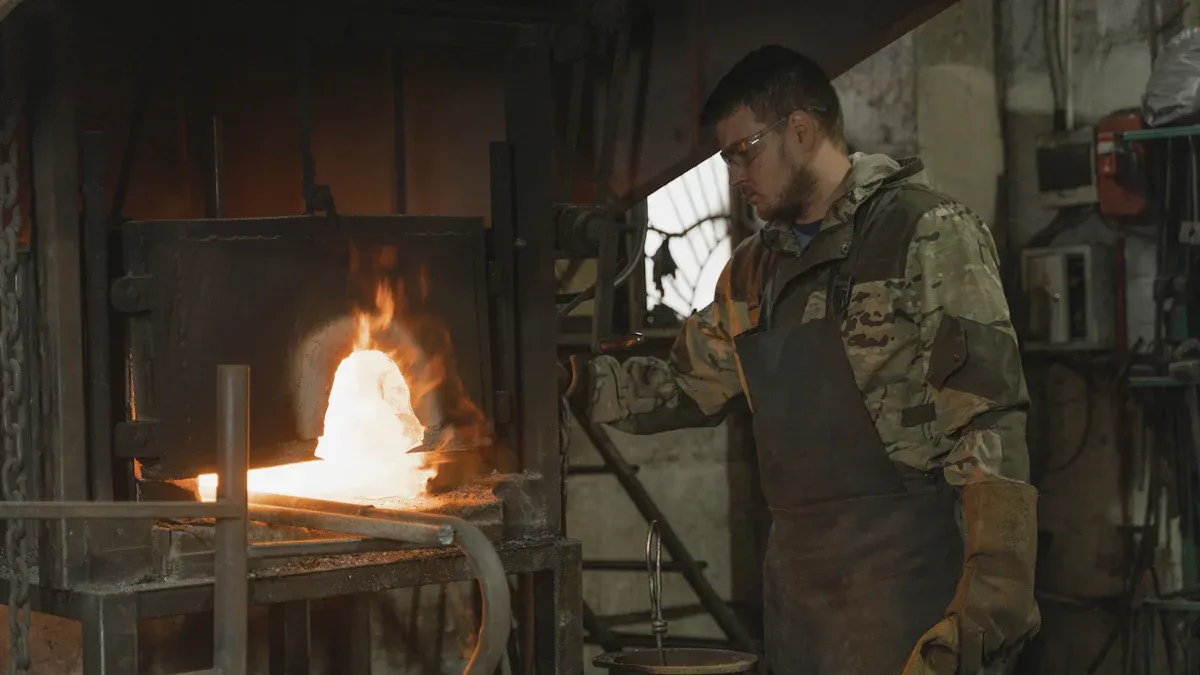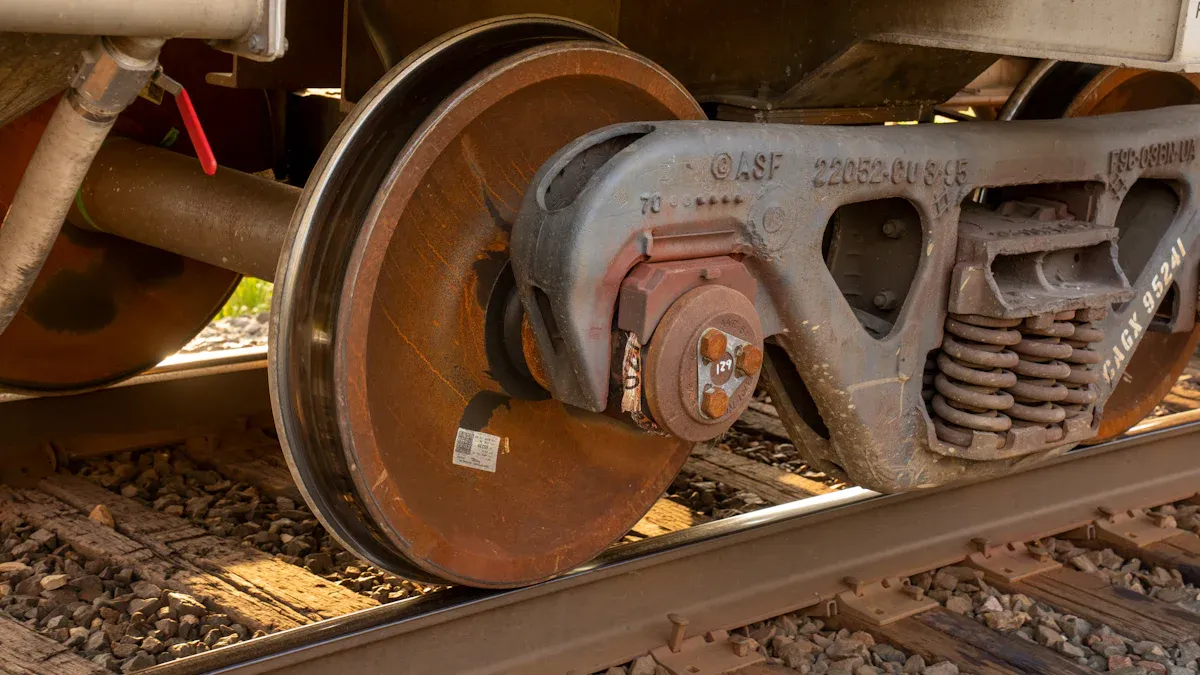
You need strong railroad castings if you want safety and good performance for a long time. Picking the right custom parts keeps your team and equipment safe. A good supplier foundry lets you control every detail, like the material and shape. KEMING uses new manufacturing methods to make custom solutions that fit your needs exactly.
Key Takeaways
Pick the right foundry for custom railroad castings. This helps keep things safe and working well. A good supplier lets you control things like material and shape.
Pick the best material for your castings based on how you will use them. Think about how strong, heavy, or rust-proof they need to be.
Talk clearly with your supplier during design and production. Share your needs and ask questions to stop mistakes from happening.
Check your castings when they arrive to make sure they are good quality. Look for surface problems and check the size matches your order.
Use a checklist before you order to make sure you remember everything important. This helps you get the right parts and saves time.
Railroad Castings Overview
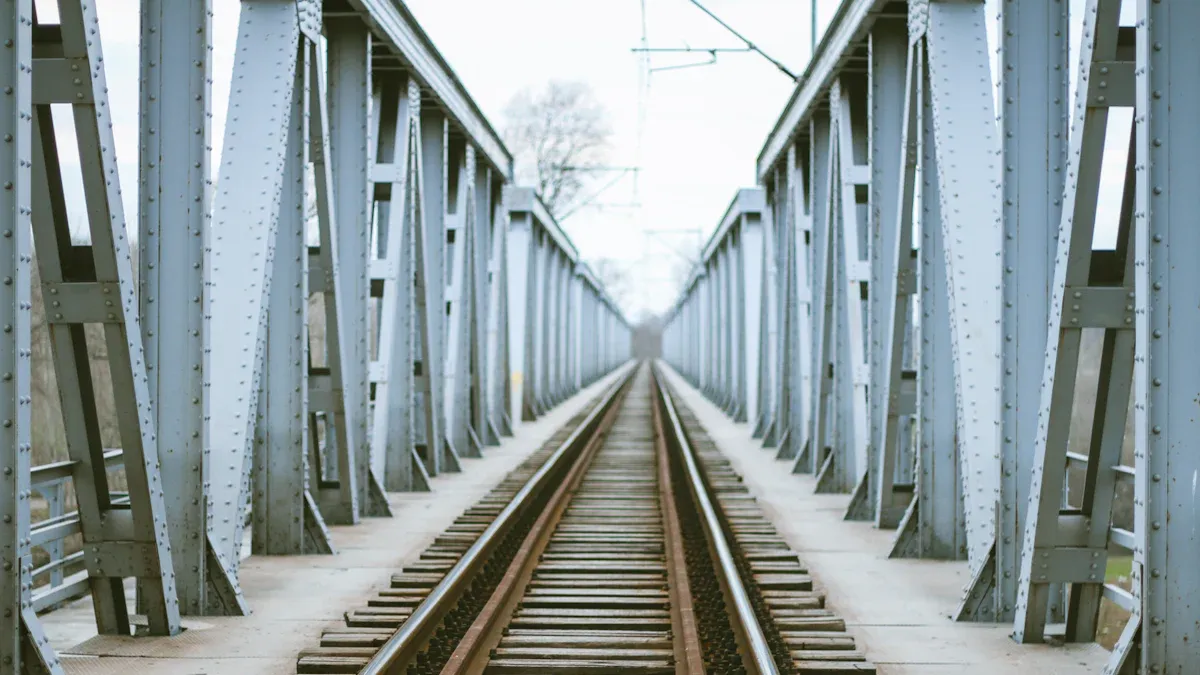
What Are Railroad Castings
Railroad castings are strong metal parts for trains. They are made by pouring hot metal into a mold. This process shapes the metal into train wheels, couplers, and brake discs. These parts help trains work well in tough weather and heavy use. If you pick the right foundry, you get custom iron parts that fit your needs.
Railroad castings have many good uses in industry. The table below lists some main jobs and benefits:
Function/Benefit | Description |
|---|---|
Weight Reduction | Lighter parts help trains use less fuel. |
Durability | Strong metal parts last longer in bad weather. |
Corrosion Resistance | Special metals stop rust and need less fixing. |
Sustainability | Many metals can be recycled to help nature. |
Industrial Applications
Railroad castings are used in many train parts. Some examples are:
Train wheels carry heavy loads and keep trains safe.
Couplers link rail cars together.
Brake discs help trains stop fast and safely.
Track fastenings hold rails tight.
Ductile iron is used a lot because it is strong and does not break easily. These castings help trains run safely and smoothly. Railroad castings are also important for making metal parts for other vehicles.
KEMING Product Range
KEMING makes many types of railroad castings for different jobs. You can pick brake discs, bogie frames, or rail clips. KEMING uses carbon steel and low alloy steel to meet tough rules. The table below shows some main products:
Product Type | Materials Used | Industry Standards |
|---|---|---|
Brake Discs | Carbon Steel, Low Alloy Steel | Meets high safety and performance rules |
Bogie Frames | Carbon Steel, Low Alloy Steel | Made to match what clients want |
Rail Clips | Carbon Steel, Low Alloy Steel | Custom made for each project |
You get strong railroad castings that fit your project. KEMING works hard to make sure you get parts that meet all the rules.
Custom Castings Specification
Defining Requirements
You need to know what you want before you order custom castings. Planning ahead helps you get the right parts for your job. Think about a few important things before you talk to your supplier foundry.
If your project is hard, you need more time and skill. Simple shapes are easier and faster to make.
The metal you pick changes how your custom castings work. Some metals last longer or stop rust better.
Dimensional allowances and tolerances help your custom castings fit right. Check these numbers with your supplier foundry.
Quality rules keep your custom castings safe and strong. Set clear rules and ask for checks.
Technical services help with pattern making and picking materials. Ask your supplier foundry if you need help.
Tip: Write down what you need before you call your supplier foundry. Good notes help you avoid mistakes and save time.
Material Selection
You have to choose the right material for your custom castings. The best choice depends on how you will use the part. Some metals are better for tough jobs, while others are lighter or easier to shape.
Material | Advantages |
|---|---|
Aluminum | Costs less, is light, and resists rust |
Magnesium | Strong for its weight and easy to machine |
Zinc | Flows well, looks smooth, and resists rust |
If you need railroad castings for hard jobs, look at steel with special elements. Vanadium in steel lowers the chance of stress corrosion cracking. High carbon steel makes your custom castings stronger and protects against rust. Vanadium also makes the steel tighter, which helps store hydrogen and stops hydrogen damage.
Note: Ask your supplier foundry which metal casting is best for your job. They can help you pick the right material.
Design Considerations
You need to think about design when you plan custom castings. Good design makes your parts strong and easy to use. Think about the shape, size, and how the part will work.
Make sure your casting design fits the job. A wheel hub needs a different shape than a brake disc.
Check the size and weight. Lighter custom castings help trains use less fuel.
See how the part fits with other pieces. Good design helps you avoid problems when putting things together.
Think about how the part will handle stress and wear. Strong custom castings last longer and keep your system safe.
Work with your supplier foundry to check your casting design. They can suggest changes to make it better.
Tip: Share your drawings and sizes with your supplier foundry. Clear talks help you get the best custom castings for your job.
Custom Metal Castings Process
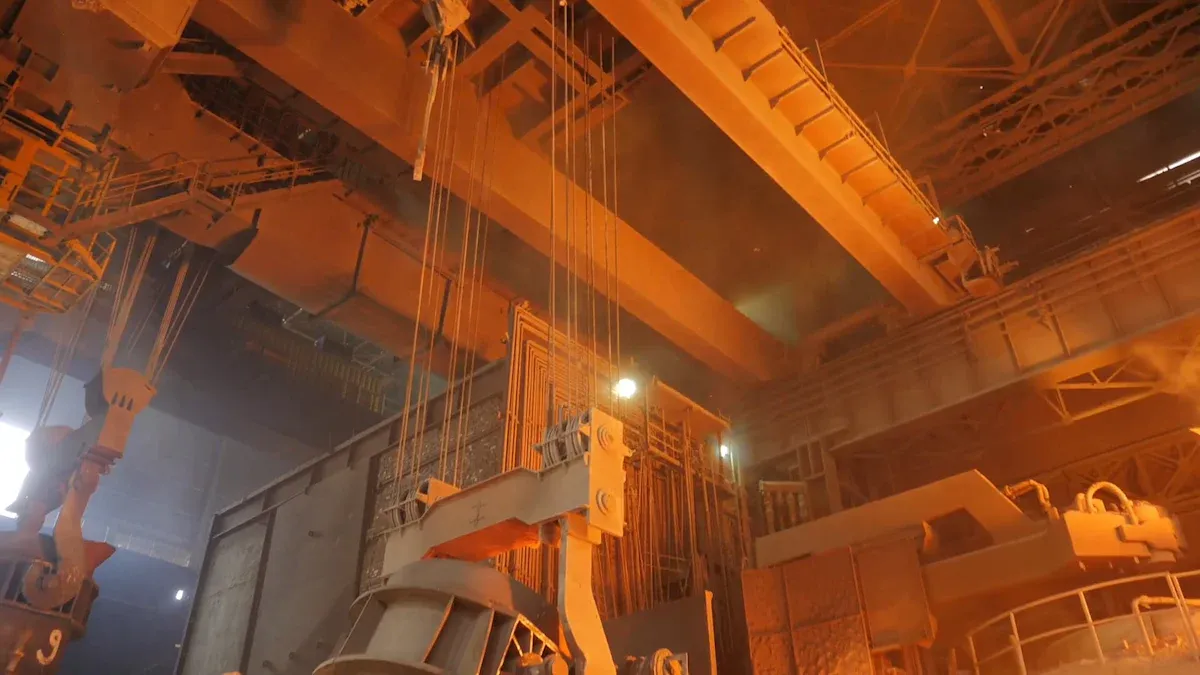
Casting Methods
You can pick from different casting methods for your railroad project. Each method has special benefits. Sand casting uses sand molds to make metal parts with tricky shapes. You can use almost any alloy with sand casting. Investment casting makes parts that are very exact and always the same. This method is good for detailed shapes and many metals. Die casting helps you make metal parts that are very precise and always match.
Casting Process | Description |
|---|---|
Sand Casting | Uses sand molds to make metal parts from almost any alloy. |
Investment Casting | Makes parts with high accuracy, repeatability, and works for many metals. |
Die Casting | Makes engineered metal parts with great accuracy and repeatability. |
You should ask your supplier foundry which casting method is best for you. The right choice depends on your design, material, and how many parts you want.
Prototyping
Prototyping lets you test your custom metal castings before making a lot. You can see how your part looks and works. KEMING uses new ways to make prototypes fast. You get to check if your custom part fits and works well. If you need to change something, you can fix the design before making more. This step helps you save time and money.
Tip: Always look at your prototype with your supplier foundry. You can find problems early and make your final product better.
Tooling
Tooling makes the molds and patterns for your custom metal casting. You want every part to be exact and the same. KEMING uses new tooling methods to help you reach your goals. You can choose from different options:
3D Printing builds molds layer by layer from a computer design. You get fast results and can change your design easily.
CNC Machining cuts molds from solid blocks. This way gives you strong and complex tooling.
Injection Molding makes molds by putting melted material into a master mold. You get very exact and matching parts.
You should work with your supplier foundry to pick the best tooling method. Good tooling helps your custom metal castings meet your needs every time.
Quality Control in Custom Castings
Testing Standards
You want every railroad part to be safe and last long. Testing standards help you check if your custom castings follow the rules. You can use different tests to find problems before using the parts. These tests look for cracks, weak spots, or other issues. You can trust your supplier foundry to use strict rules for iron casting services.
Here are some common ways to test custom railroad castings:
Inspection Method | Type | Description |
|---|---|---|
Non-destructive testing | NDT | Uses X-ray, ultrasound, visual, leak, and dye tests to find problems without hurting the part. |
Destructive testing | DT | Breaks or cuts the casting to find hidden flaws inside or on the surface. |
Mechanical tests | Non-destructive | Measures hardness and impact strength, giving you numbers to compare. |
Chemical composition | N/A | Checks what metals and elements are in your casting. |
Dimensional analysis | N/A | Makes sure your casting matches the size you asked for. |
Casting soundness | N/A | Confirms the casting is solid and strong using different tests. |
Tip: Ask your supplier foundry about their testing standards. Good iron casting services always use strong testing methods.
Inspection Procedures
Inspection helps keep your railroad castings safe and reliable. You need to check every part before using it. Most casting houses see about 95% of custom railroad castings pass the final check the first time. Only about 5% do not pass and need fixing or remaking.
You can use these steps to make sure you get good parts:
Visual checks look for cracks, holes, or rough spots.
Dimensional checks measure the part to see if it fits your design.
Non-destructive tests like X-ray and ultrasound find hidden problems inside the metal casting.
Mechanical tests check hardness and strength.
Chemical analysis confirms the right mix of metals.
You should always ask for a final inspection report from your iron casting services. This report shows your parts meet all the rules and standards.
Certification
Certification proves your railroad castings meet top industry standards. You want your supplier foundry to have the right certificates for iron casting services. These certificates show the company follows strict rules for making and checking quality components.
Certification | Description |
|---|---|
ISO 9001:2015 | Shows the company uses a strong quality management system. |
EN 15085-2, CL1 | Proves welding in railway vehicles meets European standards. |
ASME | Confirms the company follows American Society of Mechanical Engineers rules. |
You should always check for ISO 9001 certification when you pick a supplier foundry. This certificate means the company cares about quality components and follows global rules. Certified iron casting services give you peace of mind and help you avoid problems in your railroad project.
Note: Certified manufacturing helps you get safe, strong, and reliable railroad castings every time.
Common Challenges in Custom Castings
Casting Soundness
You want your metal castings to be strong and not have problems. Sometimes, things go wrong during making the parts. You can find these problems early if you check carefully. The table below lists some common casting soundness problems and what they mean for railroad parts:
Defect Type | Description |
|---|---|
Surface Defects | You might see rough spots, cracks, or stripping problems. Gas stuck in the mold often causes these. |
Slag Inclusion | Non-metal stuff can make holes in the casting. This happens if slag is not handled well. |
Sand Inclusion | Too much sand from the mold can get stuck and ruin the casting. |
You should work with your supplier foundry to look for these problems. Checking early helps you get good castings and makes sure they arrive on time.
Machining Accuracy
Machining accuracy is important for railroad castings. When parts fit together right, they last longer and work better. You need high precision to lower friction and stress. Stainless steel castings are good for wheel assemblies and brakes. They can handle lots of rubbing and last a long time. New technology like AI and machine learning helps make the casting process better. You get higher quality and parts that last longer. Accurate machining helps you meet safety rules and get your parts on time.
High precision machining lowers friction and stress.
Stainless steel castings last longer in hard jobs.
New technology helps you get better parts and on time delivery.
Delivery Schedules
You want your project to finish on time. Delays can happen if you do not plan well or handle risks. Problems with getting the right people or adding new features can slow things down. You can stop delays by doing these things:
Make your project plan clear from the start.
Get skilled people for your project.
Use change management to handle updates.
Plan for risks and how they might affect the schedule.
Check your project plan often.
You should talk to your supplier foundry early when you design your parts. Give them all the details about what you need. Tell them when you need your castings and how many you want. Ask for quotes early to help with on time delivery. Plan for long wait times, sometimes up to 24 weeks. Think about future needs to get more foundries interested. These steps help you get good castings and make sure they arrive on time.
Tip: Plan early and talk clearly with your supplier foundry to help your project finish on time.
Best Practices for Custom Railroad Castings
Specification Checklist
You need a clear checklist before you order custom railroad castings. This helps you avoid mistakes and get the right parts for your project. The table below shows important items you should include:
Item | Description |
|---|---|
Materials | List the exact metal alloy using standards like ASTM. |
Mechanical Properties | Test bars help you check strength and hardness. |
Heat Treating | Use heat treatment to improve alloy properties. |
Soundness | Set rules for impurities and defects. |
Testing and Inspection | Write down all testing terms before production starts. |
Dimensions | Add tolerances to your casting drawings. |
Weight | Give weight data for pricing and planning. |
Patterns | Design patterns for close tolerances and smooth finishes. |
Surface Integrity | Define surface inspection needs to avoid confusion. |
Internal Integrity | State the internal quality level you expect. |
Tip: Always use this checklist when you plan a custom railroad casting project. It helps you save time and get better results.
Communication Tips
You should talk clearly with your supplier foundry. Good communication helps you avoid delays and problems. Here are some best practices:
Start talking with your supplier foundry early in the design process.
Share drawings, specifications, and quantity needs.
Ask questions about manufacturing methods and costs.
Keep your engineering and purchasing teams working together.
Confirm all details before production begins.
Note: Clear talks help you get custom castings that match your needs and budget.
Post-Delivery Inspection
After you get your custom railroad castings, you need to check them. This step makes sure you get safe and strong parts. Follow these steps:
Look for cracks, rough spots, or other surface problems.
Measure the dimensions to see if they match your drawings.
Check the weight and compare it to your order.
Review the inspection report from your supplier foundry.
Test the mechanical properties if needed.
If you find any problems, contact your supplier foundry right away. KEMING gives you fast help and expert advice. You get reliable custom castings and strong metal casting parts for your railroad project.
👍 Working with KEMING gives you confidence at every step, from specification to delivery. Their advanced manufacturing and support make your custom casting project easier.
About KEMING: Your Custom Railroad Casting Partner
Company Overview
You want a foundry that knows about railroads. KEMING has made custom railroad castings for over twenty years. Their parts meet high safety and quality rules. KEMING has ISO 9001 certification, so their products follow world standards. You can count on KEMING to give you strong and dependable castings. The KEMING team works hard to make custom solutions for your needs.
Technical Capabilities
You need advanced manufacturing for tough custom projects. KEMING uses new technology to make each casting exact. You can pick from different ways to make your custom parts:
CNC milling shapes metal with great accuracy.
Investment casting makes strong and detailed parts.
Lost wax casting helps create tricky designs.
Shell mold sand casting gives smooth surfaces.
Lost foam casting makes light and complex shapes.
You get railroad castings that match your drawings and needs. KEMING’s technical team helps you choose the best way for your job. You can trust their skills to solve hard metal casting problems.
Customer Support and Services
You want help at every step of your project. KEMING gives you engineering support from the beginning. You can talk to their team about your design and get advice on materials. The staff answers fast and keeps you informed. After you get your castings, you get help with checking and any problems. KEMING makes sure you feel good about your order. You get a partner who cares about your success and helps you reach your goals.
Tip: Pick KEMING for custom railroad castings to get expert help, new manufacturing, and service you can trust.
You can get the best results for your railroad project when you follow each step. Start by listing your needs and choosing the right metal casting. Work closely with your supplier foundry to keep your specifications clear. Check every part for quality before you use it. Good manufacturing and strong teamwork help you avoid mistakes. Use the checklist to guide your order. If you want expert support, contact KEMING for help.
FAQ
What is the best way to choose a supplier foundry for railroad castings?
Pick a supplier foundry that has worked on railroad projects before. Make sure they have the right certificates. Ask them how they check quality. Look at reviews from other customers to see if they do a good job and help when needed.
How does metal casting help improve train safety?
Metal casting makes parts for trains that are strong and fit well. These parts do not wear out fast and can hold heavy weight. This helps keep trains safe and working right.
Can you change your design after starting manufacturing?
You can change your design before making lots of parts. Talk to your supplier early in the process. Changing the prototype quickly helps you fix mistakes and save money.
What should you check when your castings arrive?
Check every part for cracks or rough spots. Make sure the size is right. Read the inspection report from your supplier. Test the part’s strength if you need to check quality.
How long does it take to get custom railroad castings?
It can take up to 24 weeks to get your castings. Plan ahead and give your supplier clear details. This helps you get your parts on time.

